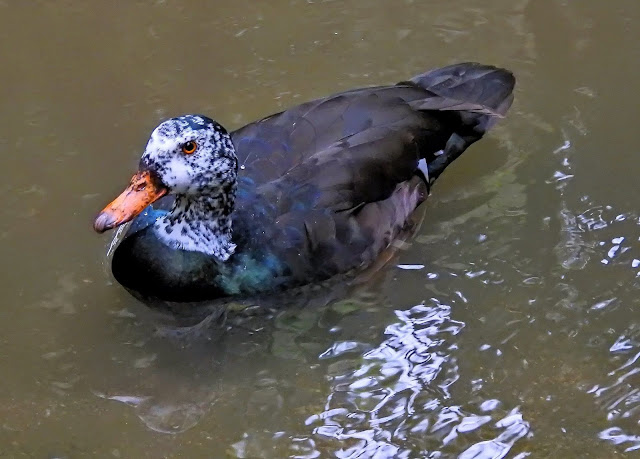The white-winged duck or white-winged wood duck (Asarcornis scutulata ) is a large species of duck, formerly placed in the genus Cairina with the Muscovy duck (Cairina moschata ) and allied with the dabbling ducks. However, mtDNA cytochrome b and NADH dehydrogenase subunit 2 sequence analysis indicate that the anatomical similarity to the Muscovy duck is deceiving and that the species is appropriately placed in a monotypic genus, as Asarcornis scutulata, which is evolutionarily closer to the redhead (Aythya americana, one of the diving ducks).
White-winged ducks are among the world’s most endangered birds and are one of the biggest species of duck. In Assamese it is known as ‘Deo Hans’ or spirit duck because of its ghostly call. Its body is black and its head is white and thickly spotted with black, it has conspicuous white patches on its wings and orange or red eyes. The male and female look alike, the male having glossier feathers and being much larger and heavier.
The White-winged duck used to be widely distributed in north-east India, Bangladesh, South East Asia, Java and Sumatra. Now it is extinct in Java. It is found in India only in the northeast, with the main populations in eastern Assam the nearby areas of Arunachal Pradesh. The key protected areas in this country are Dihing-Patkai Wildlife Sanctuary, Dibru-Saikhowa National Park, Namdapha National Park and Nameri National Park. This duck inhabits dense evergreen tropical forests, near swamps and rivers.







